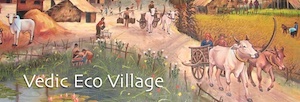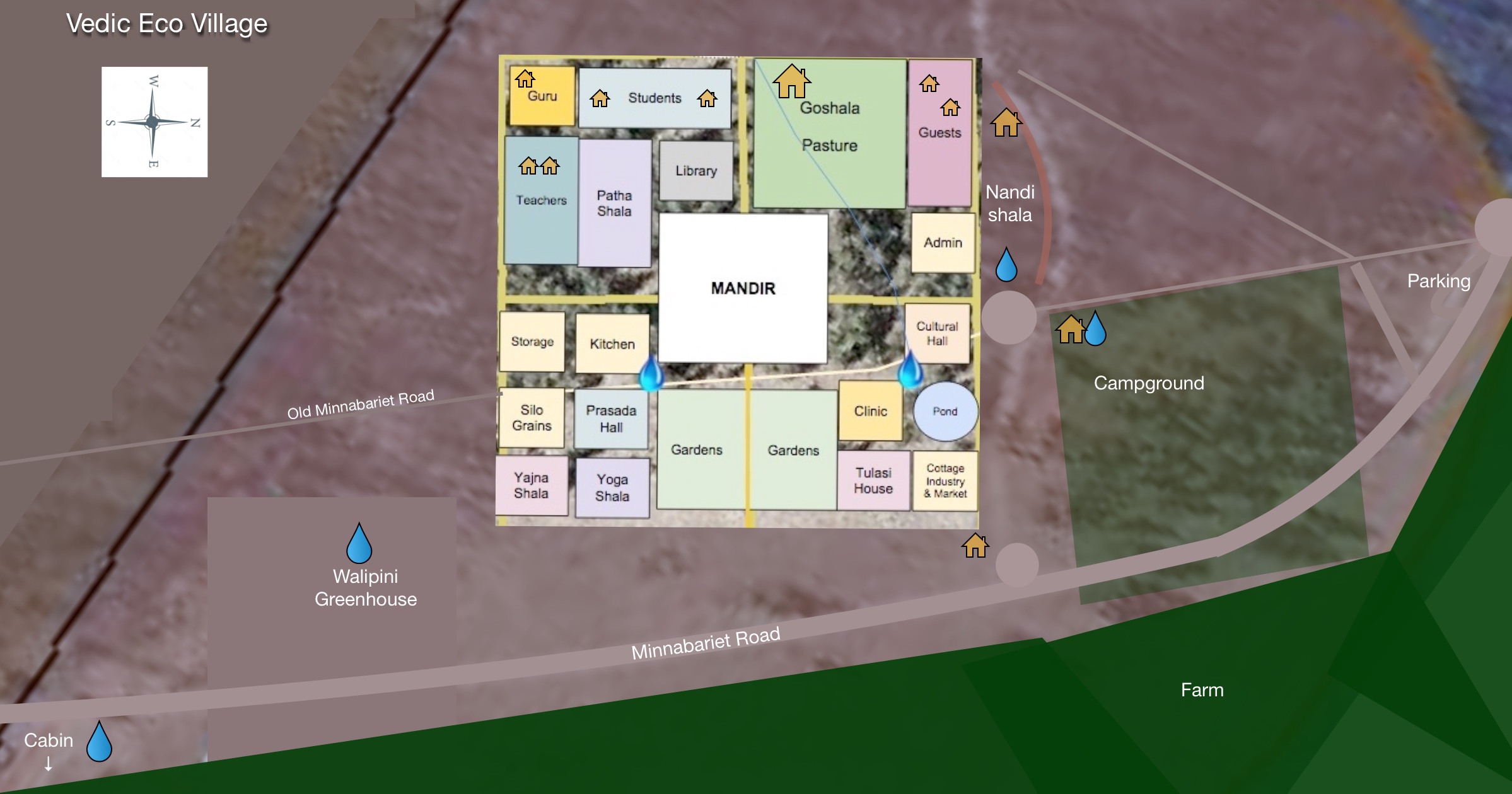As in the original Vrindavan where cows play a central role in the lives of the Brajavasis, similarly, we plan to focus all the activities within our Vedic Eco Village around cows and agriculture.
The 40 by 40 foot foundation for the goshala has been dug and construction has begun.

Goshala Building Features
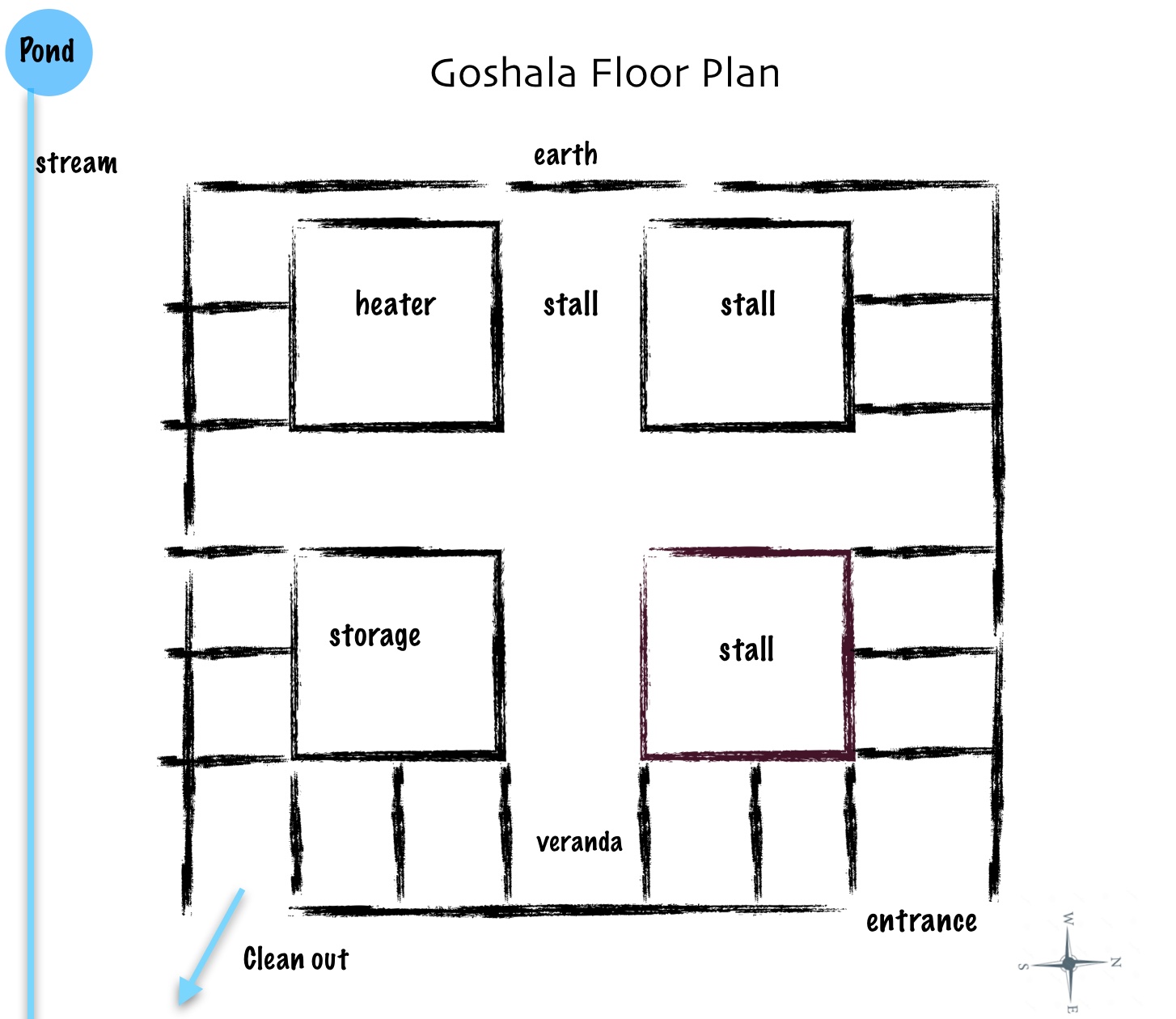
The cow shed will be a structure of wood and cob built into a NE facing dug-out slope. The design will resemble the traditional Indigenous pithouses that were historically constructed in this area.
Inside are four 10 by 10 by 10 ft wood cube structures, and a tower in the middle where the roof beams join. One cube houses a chulha mass heater and facilitates cooking, and another is used for utility storage. The remaining cubes and spaces in between become stalls for cows, and the edges become a veranda
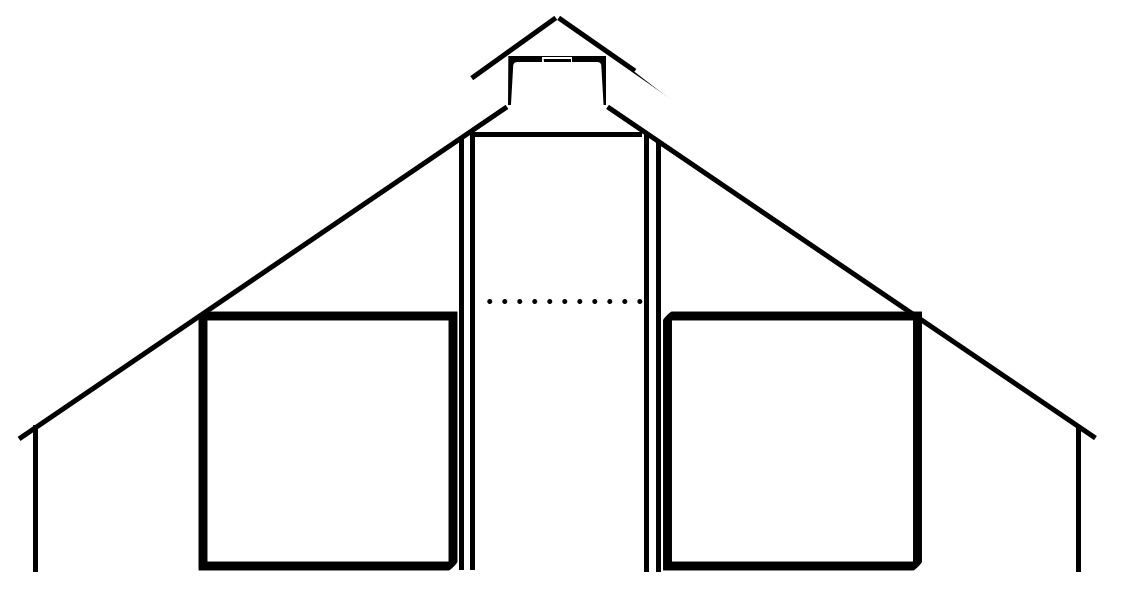
The goshala entrance faces North East with south windows for optimal winter sun.
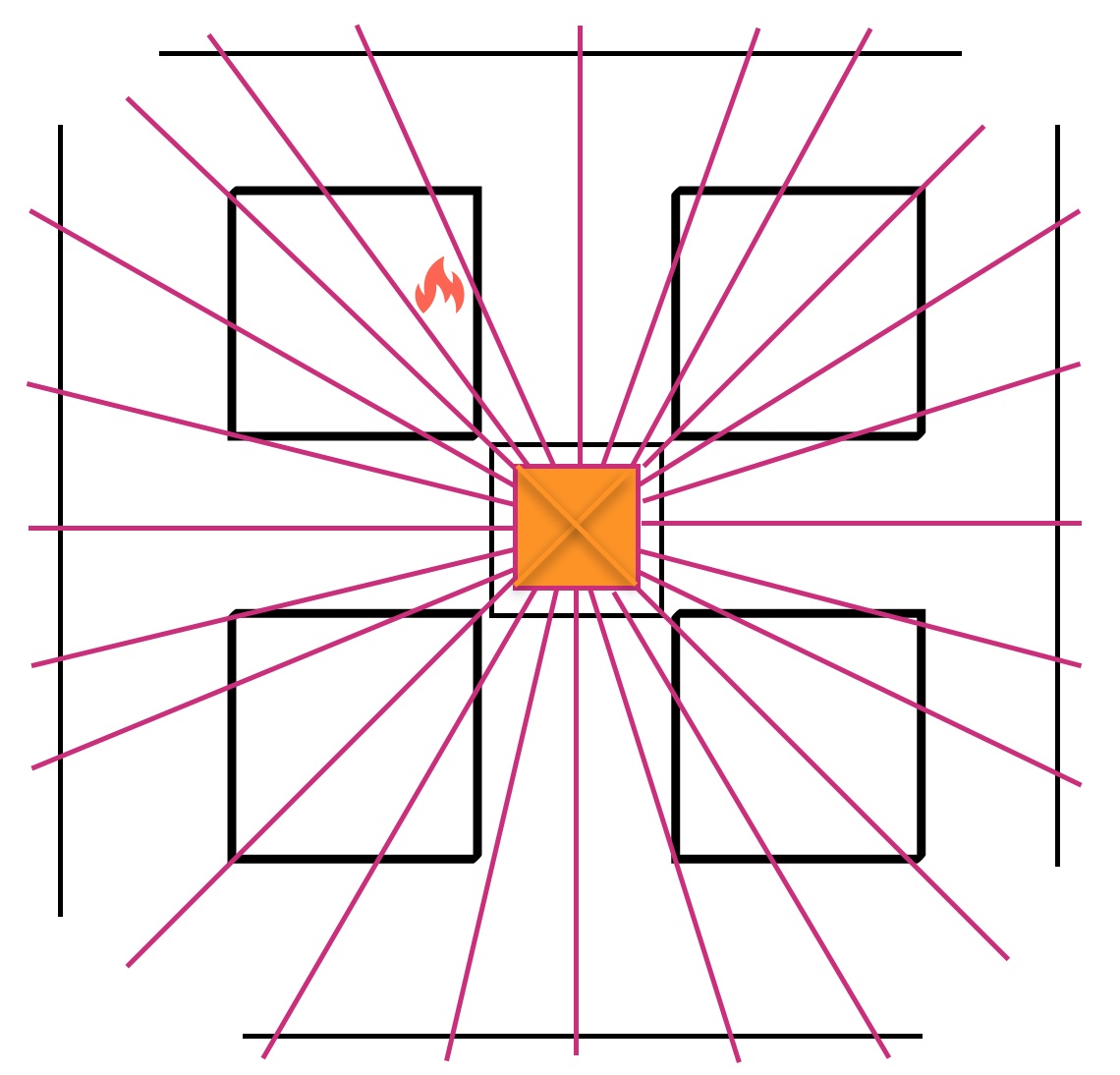
The roof is in the style of a pithouse, covered with cob and earth on the north side with flowers and grasses planted over top. The south side will be predominantly glass. The top of the cubes will be used as lofts for hay storage.
Guest cabins will be located beside goshala.
For the maintenance and good health of the cows we will have designated grazing areas in our fields and forests. When the weather permits, cows will be out grazing. The bulls and ox will live in an area separate from cows.
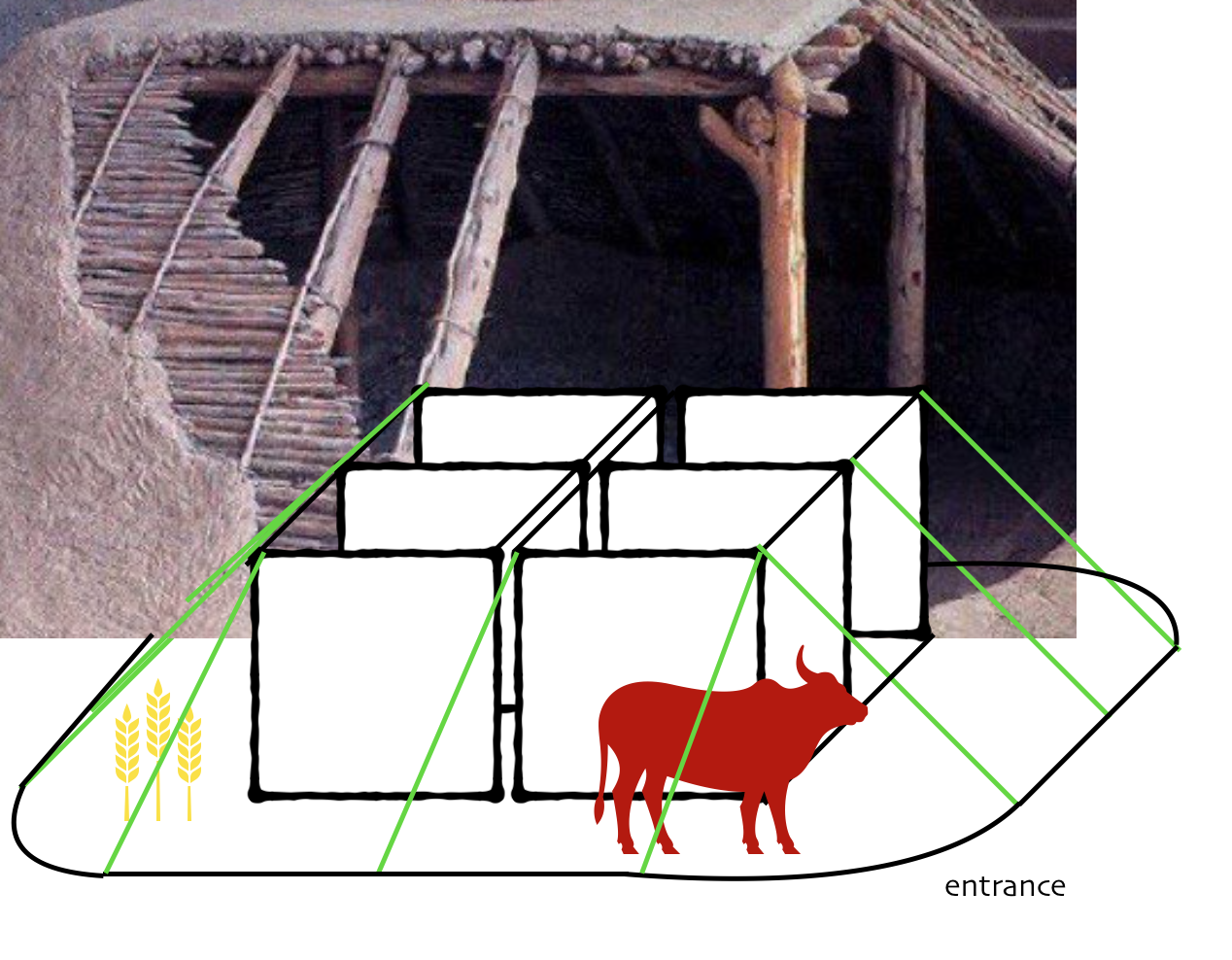
Building Features
- earth roof = fire proof !!!
- solar heated and powered
- sparkless chulha for heating, drying, boiling, cooking
- walls coated with plaster and dung
- straw and clay walls/insulation
Economics
In connection with cows, we plan to introduce Panchagavya products such as body soaps, incense, washing soap, tooth powder, phenol and other products. Srila Prabhupada wanted us to protect cows. That means he wanted that we take products from protected cows.
Project Tasks & Budget
